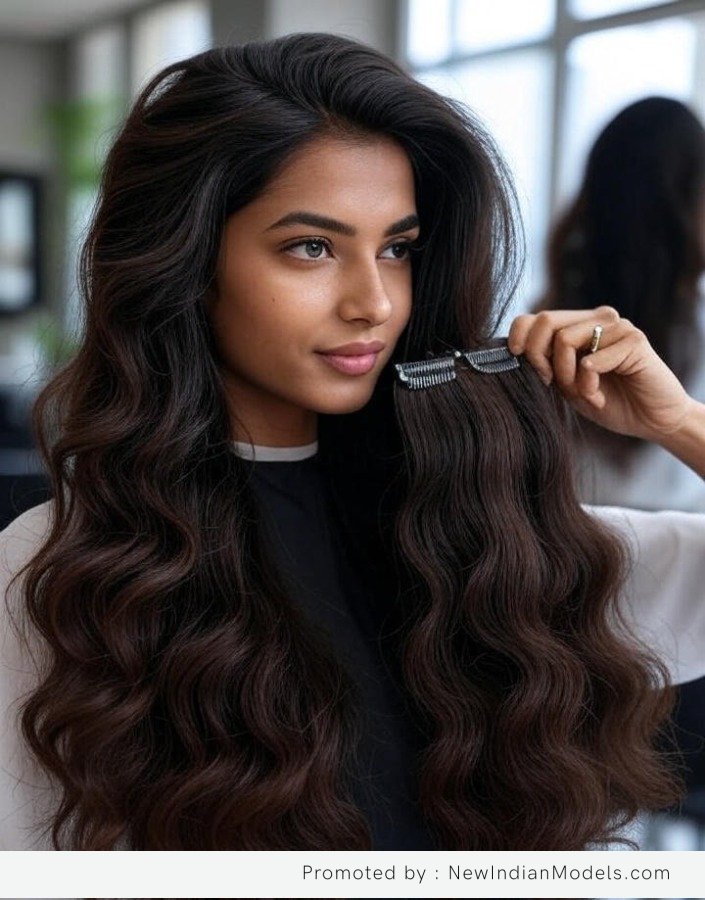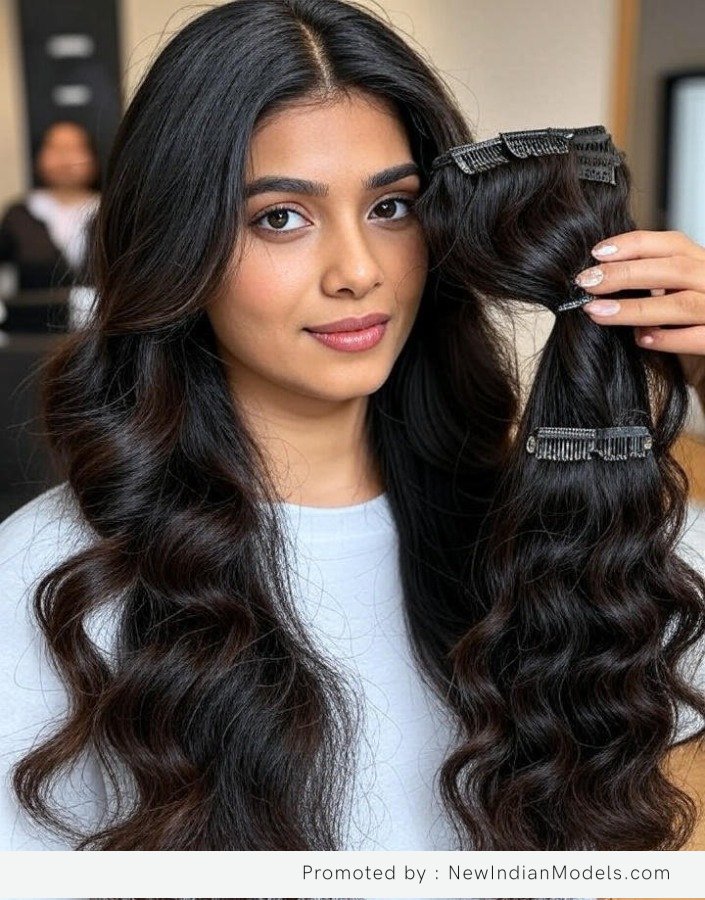PLAYING WITH HAIR EXTENSIONS
It’s a phenomenon many of us have observed, isn’t it? The seemingly effortless transformation of celebrities, their hair shifting from chic bobs to cascading waves, or from subtle highlights to bold, fashion-forward colours, often in the blink of an eye. This dramatic and remarkably swift evolution in hairstyles is, in large part, thanks to the ingenious and widespread use of **hair extensions**. These aren’t mere fleeting fads; they represent a sophisticated and versatile approach to hair enhancement that allows for an unparalleled level of stylistic freedom.

Hair extensions, when applied with meticulous care and under the expert guidance of seasoned professionals, unlock a world of possibilities. They are not simply about adding length, but about **enhancing your natural tresses in the most flattering and impactful way imaginable**. The artistry involved lies in seamlessly blending synthetic or, more commonly, ethically sourced human hair with your existing strands, creating a look that is both natural-looking and undeniably striking. Think of it as a painter adding depth and dimension to a canvas; extensions allow for the creation of richer textures, fuller shapes, and a more captivating overall appearance.
** If you are looking for the best modeling agency in Delhi, then NewIndianModels.com is the one you should consider. For kids – KidieZone is the best modeling agency in Delhi for kids. **
Applying hair extensions, as might be done by an Indian model, involves a series of steps to achieve a seamless, natural look. The process can vary depending on the type of extensions—clip-in, tape-in, sew-in, or glue-in—but here’s a general guide based on common practices and the context of premium hair extensions often sourced in India. Indian hair is renowned for its quality, often ethically sourced from temples, and is popular for its versatility, lustrous texture, and ability to blend with various hair types.

Steps for Applying Hair Extensions (Clip-in Method, Commonly Used for Models):
- Preparation:
- Wash and Dry Hair: Start with clean, dry hair to ensure the extensions adhere properly and blend naturally. Use a gentle, sulfate-free shampoo and conditioner to avoid drying out the hair.
- Section the Hair: Part the hair into manageable sections, typically starting from the nape of the neck and working upward. Use clips to secure the upper sections out of the way.
- Choosing Extensions:
- Select high-quality extensions, preferably 100% human hair, such as virgin Indian Remy hair, which is common in the industry for its durability and natural look. Indian models might opt for brands like Gemeria Hair, Indique, or Nish Hair, which offer extensions that match Indian hair textures.
- Match the color and texture (straight, wavy, or curly) to the model’s natural hair for a flawless blend. For a vibrant look, colored extensions (e.g., Ruby Wine or Ocean Blue from Diva Divine) can be used without damaging natural hair.
- Application (Clip-in Extensions):
- Tease the Roots: Lightly backcomb the roots where the clips will be placed to provide grip and prevent slipping.
- Attach the Extensions: Open the clips on the extension weft, align them close to the scalp, and snap them shut to secure them to the hair. Start at the nape and work upward, ensuring even distribution for volume and length.
- Blend: Release the upper sections of hair and gently comb or brush to blend the extensions with natural hair. Use a mirror to check for visible clips.
- Styling:
- Style the extensions as desired using heat tools (e.g., curling iron or straightener) with a heat protectant spray to avoid damage. Indian models often style extensions for voluminous waves or sleek straight looks, as seen in Bollywood-inspired looks like Priyanka Chopra’s hip-grazing waves.
- Avoid excessive styling products like mousse or gel to prevent buildup, and opt for alcohol-free products to maintain the extensions’ quality.
- Maintenance:
- For temporary use (e.g., a photoshoot or event), clip-ins are ideal as they can be removed after use without damaging natural hair. Remove them before sleeping or swimming to avoid tangling.
- For longer-term use, wash extensions every 10-15 uses (or once/twice monthly if worn frequently) with sulfate-free products, air dry, and store in a pouch to prevent tangling.
Considerations for Indian Models:
- Cultural Context: Indian hair extensions, often sourced from temple donations (e.g., Tirumala Tirupati Devasthanams), are valued for their unprocessed, virgin quality, making them a premium choice for models seeking authenticity and durability. This aligns with the Indian market’s emphasis on natural beauty.
- Professional Application: For permanent or semi-permanent extensions (e.g., tape-ins or sew-ins), models may visit salons like Diva Divine in Mumbai or Delhi, where experts ensure precise application and customization. Clip-ins are preferred for quick, non-damaging transformations for shoots or events.
- Versatility: Indian models, like Bollywood actresses (e.g., Katrina Kaif or Priyanka Chopra), use extensions to achieve dramatic looks, such as long, flowing hair or vibrant colors, without chemical damage to their natural hair.
Tips for a Natural Look:
- Choose extensions that match the hair’s texture and color closely. Indian hair’s natural wave or curl patterns make blending easier.
- Avoid overloading with extensions to maintain comfort, especially for fine hair, which is common among Indian women.
- Consult with a stylist for complex applications or customizations, as seen in high-end salons or brands like 1 Hair Stop or The Shell Hair, featured on Shark Tank India.
3054 total views, 1 today



